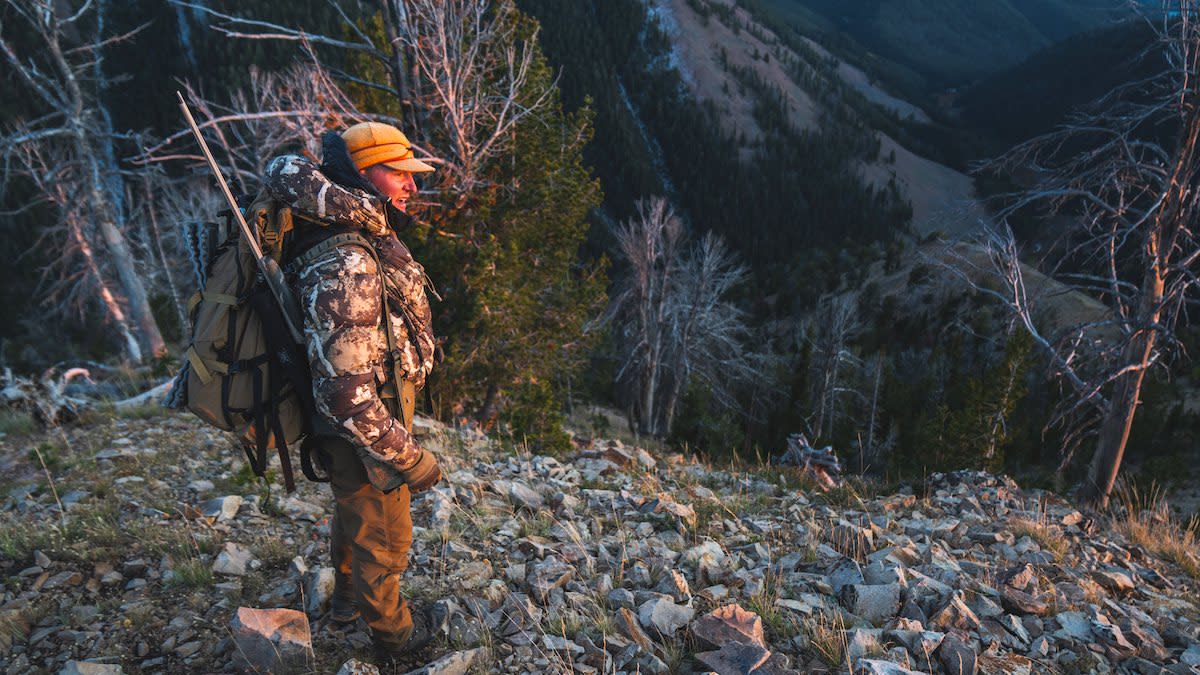
I’ve often been accused of carrying a lot of stuff going into the mountains for all-day or multi-day hunting adventures. But I’ve never once been accused of being unprepared.
Every elk or mountain muley hunter exists on a spectrum of comfort—and associated pack weight—ranging from spartan to cushy. Some folks simply are tough as granite, but I truly believe that most of us will hunt better, go further, and stay longer when we have the appropriate gear to make us feel comfortable and relaxed. Besides injuries and dealing with other hunters, the only way to ruin a day in the mountains is to not have the right stuff.
With the versatility of today’s hunting backpacks, there’s really no reason to not have what you need and be ready at all times to kill something. It is a giant waste of time—and possibly a waste of meat—to go all the way back to the truck to grab your kill kit or meat hauling frame. It’s much better to butcher an animal when you find it and take the first load out post haste.
You can fit a lot of other stuff in those packs and, while that doesn’t mean you need to haul all of it all the time, you often can afford a few creature comforts that will enhance your enjoyment and performance.
Clothing
Opening weekend of elk season this year brought both 80-degree sunshine and a full-on blizzard. I was glad I carried in my full-on shell jacket and pants for a backcountry hunt; my partner was disappointed he forgot his. There is certainly space for judgement calls, but I pretty much always assume when I’m headed into the mountains that precipitation and 60-degree temperature swings are possible. Besides the clothes on my back, I also always bring a beanie hat, merino buff, mid-weight gloves, and packable down jacket. The amount of extra clothes I carry increases relative to the weather deteriorating later in the season.
Safety
If you often hunt alone and way back like I do, it’s smart to have duplicative means of finding your way out, surviving a night, or calling in the heavies. I follow the mantra of “two is one and one is none.” To that end, I always carry my iPhone with onXmaps, a separate GPS unit, a SPOT locator beacon, and extra charges for all. You can also use an InReach or EPIRB or whatever you want, just don’t leave it behind.
For the sake of survival, I also carry a robust first aid kit, a small shelter tarp that doubles as a butchering drop cloth, a small water filter, as well as a pistol and bear spray in grizz country.
Kill Kit
If you don’t think you’re going to kill anything, you’re probably right. Hunt with the mindset that luck might strike at any moment, and pack to be ready for it.
When hunting mule deer, I carry four large game bags. For elk, I bring six. For the moose I killed last month, we used eight. I roll those up and pack them tightly in a small stuff sack, along with a sharp knife, a small sharpener, thin rubber mechanic’s gloves, and a contractor-grade garbage bag. The gloves protect my fingers and the garbage bag protects the meat, my pack, and my back when I go to load up. Keeping all these items together means you can get right to work.
Creature Comforts
It’s weight to some, and it’s quality of life to others. I tend toward a desire to be comfortable and content glassing on some rocky outcropping in the wind above the timber line all morning, or busting through that timber all afternoon. For that reason, I rarely ditch my butt pad, an old Therm-a-Rest Z-Rest cut in half. One hunting buddy brings an ultralight chair, but that’s a little rich even for my tastes.
Trekking poles add a pound or so and don’t pack very well, but I have a hard time leaving them behind anymore. Steep ascents and descents or heavy backpack loads almost necessitate a little extra balance and support. It’s just something you get used to. Don’t forget the end-cups for your poles when you’re in deep snow or mud.
Spotting scopes are optional and whether I carry mine depends greatly on the general visibility the landscape provides. What I don’t view as optional anymore is a small tripod for glassing. Your glassing ability increases tenfold when your binoculars are stabilized. You simply see more when your lenses aren’t riding your breaths up and down. Speaking of optics, it has to be a really cloudy day for me to leave my sunglasses in the truck.
The hippest new fad in cool-guy mountain hunting is hauling along a JetBoil stove for day hunts. I’ll admit—I’ve done it myself. Nothing makes you feel quite as competent and one with the mountain as making a nice cup of coffee while glassing on a high promontory at first light. A hot bowl of ramen at lunch on a cold, snowy day is downright delightful too. Sure, that’s a foolish additional weight when you could just have water and a bar, but if it keeps you in the game day in and day out, the weight can be worth it.






Conversation